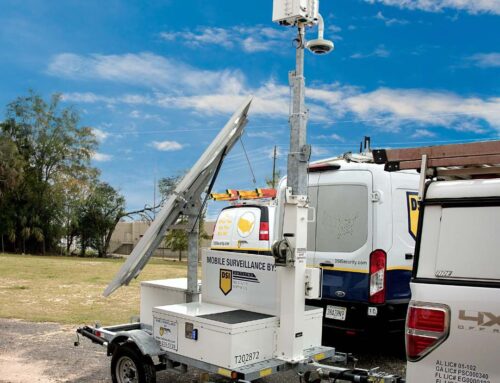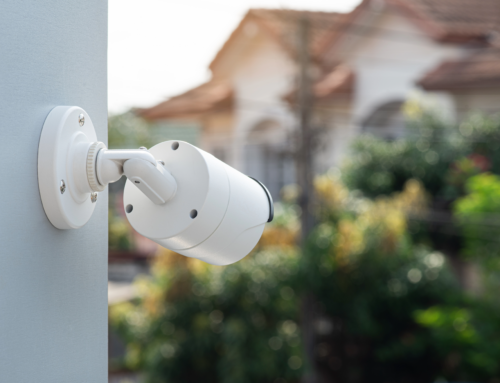
By: David Crow
Regional Sales Director, DSI Security Services
Organizations typically understand the need for security, especially in an age where even a minor event can quickly become a public relations nightmare. At the same time, however, return on investment is a constant driver when decisions are made, and ROI calculation applies to security just like any other cost center. In order to grow, it is important for security providers to demonstrate their value—and value-added impact helps do this.
The security team must identify, assess, and prioritize risks and then apply and maintain controls to mitigate them; it’s what they were hired to do. In order to excel, however, a private security firm must go beyond that baseline and look for ways to offer value-added impact to their service. Let’s explore the idea of adding value a little further.
Understand the Client
The understanding needed to provide a minimum level of security is relatively simple—find out where the entrances are and protect them. One of the best ways to add value to the protection program is to develop a deeper knowledge of the client’s business and associated risks. Risk assessments are a value-added impact in and of themselves, but they also lead to other service offerings.
In business terms, a security firm should seek to become a strategic partner rather than just a cost center. You can do this by working closely with an organization to determine what is most important to them, identifying the specific risks that the organization faces, and being proactive in mitigating them.
What matters most to business is not limited to physical assets, although they certainly rank high on the list. Other areas of consideration can often be found in a company’s value statement, their mission declaration or their driving philosophy. Speaking with business development and marketing teams about how they describe the company can also lead to insights. Commitment to the safety of employees and customers is typically important to a company, as is their reputation.
Tailoring a protection program that visibly maximizes the safety of the customer as well as employees can provide ample value-added impact. A security officer may be the first person a customer sees and interacts with, so professional-looking and well-outfitted officers can add value by making a good first impression.
Bonus:
That impression applies to potential employees, as well. A focus on promoting a safe working environment can be a good selling point when trying to attract new hires.
Dig a little deeper and you will likely find that supply chain disruption, intellectual property theft, power interruption, and fire loss are among risks that a company is most concerned about. While not necessarily under the control of the security team, these are areas over which a vendor can certainly have a value-added impact. A security vendor can significantly increase their value to the organization by becoming a trusted, expert partner in the discussion of topics such as supplier reviews, environmental factors, facility design, training, and emergency preparedness.
Understand the Area
The leader of the security team should become an expert on crime in the client’s neighborhood. The knowledge gained can be helpful in designing the right protection program and ensuring that the client understands the importance of every aspect of it. A value-added service can be offered in the form of a quarterly local crime statistics report. Statistics can usually be obtained from the local police department.
Be Flexible and Accommodating Where Possible
As we mentioned, security is often viewed as just another cost of doing business. Being seen as a hindrance to doing business only compounds that attitude. A protection program certainly has to establish limits on what is allowed, but those limits must be balanced with the impact on customer satisfaction or employee productivity. By regularly evaluating the impact of and reaction to security protocols, a security vendor can make demonstrable improvements.
Speeding up access verification, answering visitor questions, and even just explaining why an action is not allowed can all help to improve the image of security, and thus add value. It is also highly beneficial for officers to be trained in de-escalation procedures that can help keep minor disagreements from becoming damaging incidents.
Communicate Effectively and Transparently
Don’t assume that management knows the benefit that the security team is providing. While providing a secure environment may seem like justification enough, the CFO will be much more satisfied by additional hard data. By establishing a baseline and reporting results on a regular basis, the security team can offer proof of their value to the organization.
Workforce management technology has replaced handwritten logs and has vastly improved the ability of security providers to track and report incidents as well as guard-hour calculations. The software can easily track the number of incidents that occur or were prevented, frequency and severity of incidents, losses from incidents, and whether safety or security was at risk. The data is instantly available to security team leaders and can easily be turned into understandable metrics for the client. Regularly and measurably demonstrating performance is a value-added impact in itself.
The technology can also be used to identify opportunities to add more value. If an officer notices an area of vulnerability, such as a door left open or a burned-out light in a parking garage, he or she can instantly communicate the issue along with photo or video confirmation. Digital logs may also indicate levels of activity that require adjustments to the protection scheme.
Promote Technology
Using technology to add value to the protection scheme is not limited to workforce management systems. Advances in technology, particularly artificial intelligence (AI), have made cameras and other remote monitoring devices an attractive addition to the security program. AI has changed the security camera game by constantly analyzing images and only initiating a response if necessary. Responses may include an audible warning or siren, calling a security officer, or alerting a remote command center, which can now effectively monitor numerous locations.
While they should not be seen as a replacement for live officers, such devices can act as a kind of force multiplier for the security team. They essentially add more coverage and more consistency without adding additional personnel. Initial cost may seem significant, but the return on investment is not difficult to express to a potential client and can be a significant value-added impact. Analysis of traffic and usage patterns can also lead to the discovery of vulnerabilities that may result in additional service offerings.
The Value-Added Impact Mindset
Put all of the above together, and you get a picture of what it means for a security team to add value to the organization by becoming a strategic partner rather than just a security guard service provider. Adding value is not just about offering additional line items, but creating and demonstrating a value proposition that strengthens the partnership with a client.






